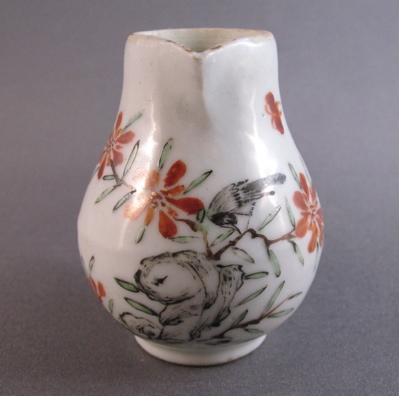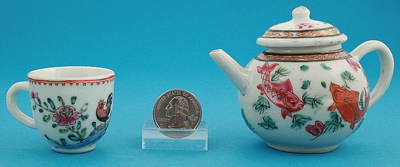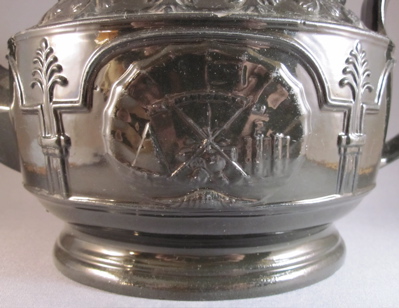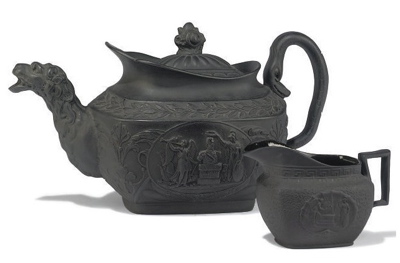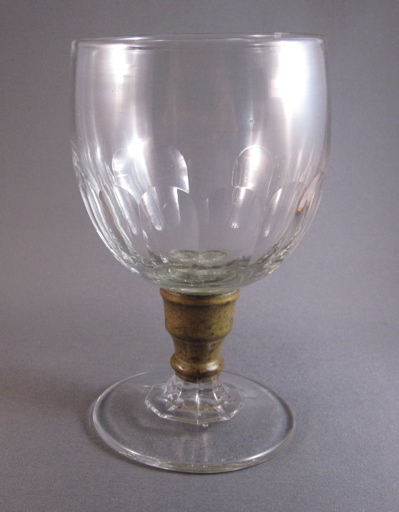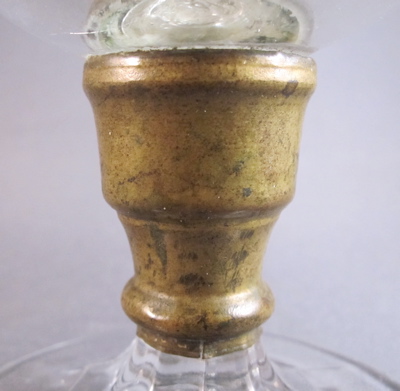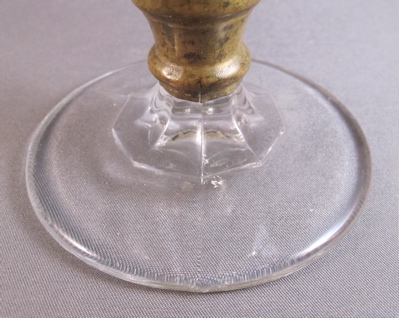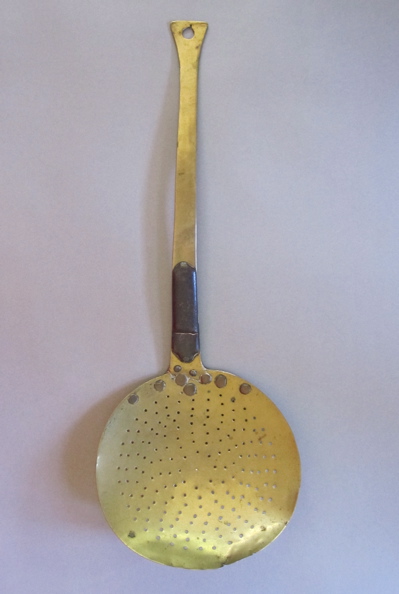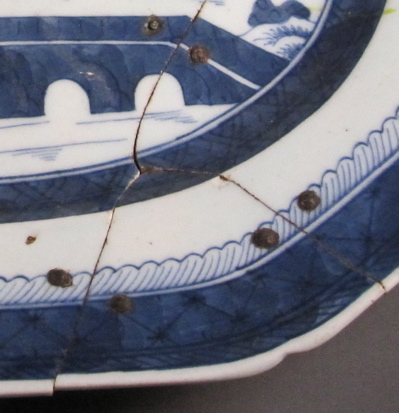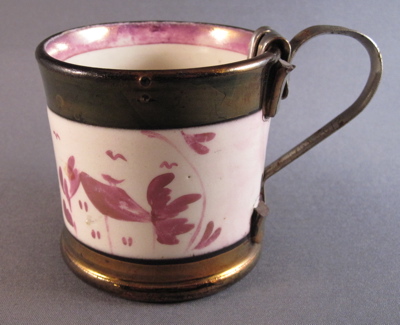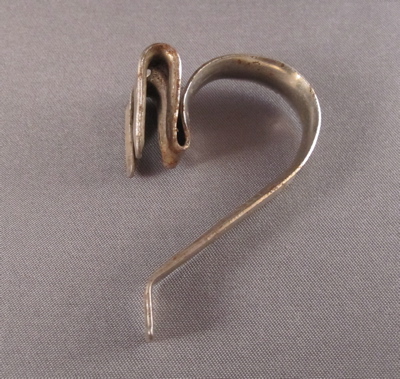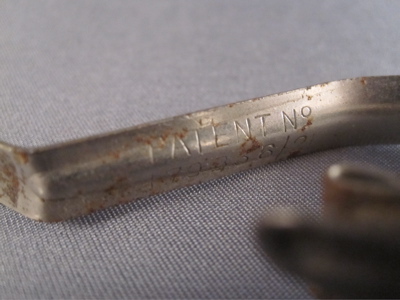I just picked up this miniature porcelain sparrow beak cream jug last week in Maine. It appears to be from a child’s toy tea service, although miniatures were made for adults to collect as well. This bulbous form jug was made in China during the Qianlong period (1736-96) for export to North America and Europe in the mid-1700’s
Jug is embellished with flowers, butterflies and a bird in orange, brown, black, green and ochre enamel…
…and stands a mere 2-1/2″ tall, originally with a matching porcelain lid
A tiny bronze handle covered in woven rattan replaces the original porcelain handle, which must have broken off in the early to mid-1800’s
These Chinese export “toy” teawares were also made during the Qianlong period
Photo courtesy of M. Ford Creech Antiques

